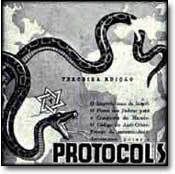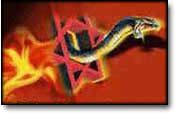The 2,000 year dance between the Jewish people and Western civilization has spawned many questions of scholarly interest. A relatively minor point, though not trivial, has been the issue of the biological relatedness of the Jewish people, and their relatedness to the nations among whom they were resident. This particular point became more starkly relevant with a scientific understanding of human genealogy and genetic relationship in the 18th and especially 19th centuries, but its root can be traced back to antiquity. Jews are not simply a set of individuals who espouse a belief in the God of the Jews, or hold to the laws of the God of the Jews. Rather, one aspect of Jewish identity is its collective component whereby the adherents of the Jewish religion also conceive of themselves as a particular nation or tribe, and therefore bound together by a chain of biological descent. Ergo, the traditional assertion that one is a Jew if one’s mother is a Jew.
Of course these issues can not be understood except in light of a complex historically contingent sequence of events. Our understanding of what it means to be Jewish today, or the understanding of Jews themselves as to their own identity, is the outcome of a long process where self-identified Jews interacted with the broader milieu, as well as evolving in situ. In other words, the Jewish people and the seeds of the Jewish Diaspora were shaped by developments within and without the Jewish culture, and these developments left an impact on the genes of the Jewish people. Contemporary groups outside the “Jewish mainstream,” such as the Beta Israel, Bene Israel and the Karaites, but with an acknowledged connection to Judaism, are windows into other faces of being Jewish besides that of Rabbinical Judaism.
And yet it is descents of the adherents of Rabbinical Judaism, the Judaism of the Pharisees, which we think of when we think of Jews (even the non-Orthodox traditions emerged out of a cultural milieu where Orthodox Judaism was normative). The vast majority of the Jews of the world trace their lineage back to the groups who organized their lives around not just the Bible, but also the Talmud, and subsequently commentaries and rulings by rabbis who were trained in the Talmud. Today these Jews fall into three broad groups, the Ashkenazim, Sephardim and Mizrahim. The Ashkenazim are rather easy to define, as they are the Jews of Central Europe who have been so prominent over the past few centuries. Though it seems likely that in the first millennium their ancestors were to be found along the Rhine, more recently their center of gravity has been in Central & Eastern Europe, in particular Poland and Lithuania. The Sephardim were originally the Jews of Spain, but after their expulsion in 1492 they settled in the Ottoman Empire, and to a lesser extent in other regions of Europe such as the Netherlands. A major confounding issue with the modern Sephardim is that in the Ottoman lands they encountered and interacted with preexistent Jewish communities, who often maintained a distinctive identity subsequent to the influx of the Sephardim. Though in most cases, such as in Morocco and Syria, the Sephardim became culturally dominant and assimilated the indigenous Jewish community into their identity (though they often abandoned Ladino, the language they brought from Spain, for the local lingua franca), in other cases two distinct Jewish communities were coexistent down down to the modern era (e.g. Greece). Finally, the Mizrahim are Jews of the East or Oriental Jews, those Jews whose ancestors hail from Muslim lands where the Sephardim were never a presence. To a great extent the Mizrahim identity is a recent catchall constructed to identify a real dividing line between those groups which are the products of the Sephardic-indigenous synthesis, such as the Moroccan Jews, and those which are not, such as the Yemeni Jews. Often all non-Ashkenazi Jews are referred to as Sephardic because of a common religious liturgy which binds them. More
Sunday, 6 June 2010
Genes & Jews
Posted @
19:49
![]()
Subscribe to:
Post Comments (Atom)
![[9_10_s22.jpg]](https://blogger.googleusercontent.com/img/b/R29vZ2xl/AVvXsEjTXnQay9wzz0E6nVHrVhaHKoq_zYXDqZjijHlNDQzj90MZzInrCuVX4ciFYCiBfZ7lhlgr2bBhhnl7ddWbhdih5JbXjQYbA605TNyiq046bQqjG2A4S-nHTmh1VBTQSG6tmc23wq47QQ/s1600/9_10_s22.jpg)




No comments:
Post a Comment